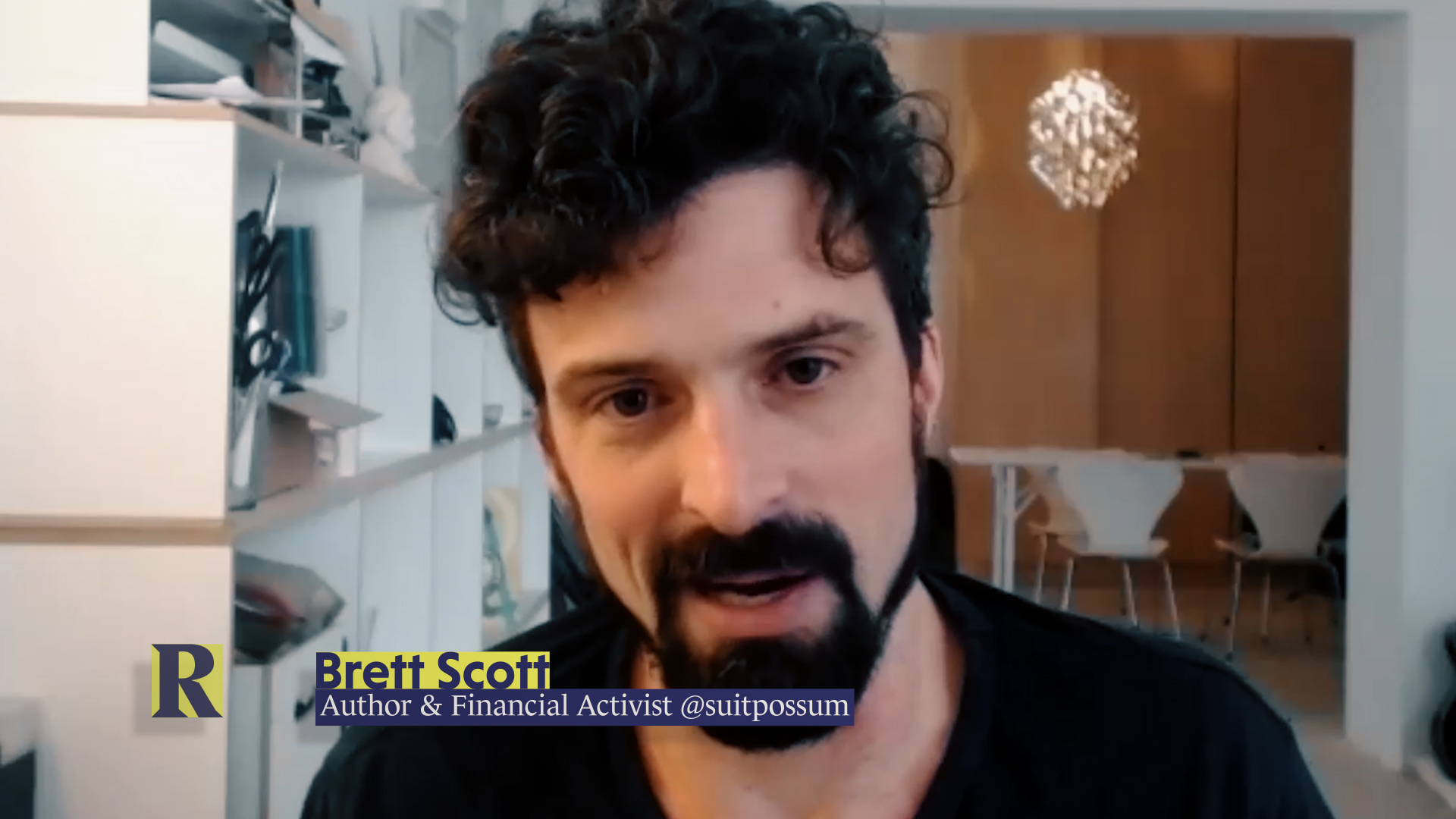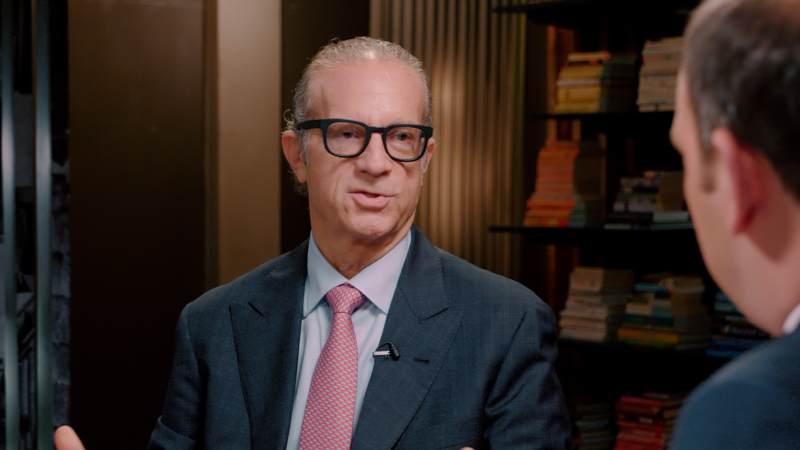Published: 11 June 2021
Guests: Brett Scott
Further reading: The Heretic’s Guide to Global Finance: Hacking the Future of Money
Listen to Audio Download TranscriptOver the last few years, the subject of money has come into sharp focus. Increasingly, we want to know who creates it, who issues it, who controls it, and importantly, who decides who gets it first.
Today’s paradox is why with so much money now created, do we still have so much inequality and poverty? And should this contradiction lead us to ask, how much do we really know about the dynamics of money? Host, Ross Ashcroft, met up with Author, Brett Scott, to discuss.
Money has evolved over the millennia from natural objects to coins to paper to digital versions. But whatever the format, human beings have long used currency as a means of exchange, a method of payment, a standard of value and a store of wealth. Money also brings diverse societies together by enabling gift-giving and reciprocity; it perpetuates social hierarchies and is a medium of state power.
Given the broad knowledge we have of money, it is perhaps surprising that many big financiers who know how to work with the medium, rarely understand how the monetary system actually works. Ostensibly, US Federal Reserve Chair, Jerome Powell is an exception to the rule. During a TV interview last year, the financier conceded that central banks have the ability to flood the system with digitally created money and printed currencies.
What Powell acknowledged is that ‘magic money trees’ can effectively be created by bankers out of thin air, an insight covered a decade previously in the documentary, Four Horsemen. But as useful as this understanding of the mechanism of money is, Brett Scott emphasizes that from the perspective of those individuals who use money issued by others, it only represents part of an overall surface level picture.
Scott argues that it’s important to view the monetary system as a complex set of interdependent and interconnected network structures from which the dark arts of money emerge.

Scott explains:
“There’s these different layers of debt in a system. The bottom layer are these contracts that are locked into real goods and services and then you can build new layers of debt on top of that. I’d probably place derivative markets at layer eight of the financial system, while the deepest is actually the global ecology which the monetary system locks into. When you’re looking at these multilayered structures, the higher up you go, the more abstract and large scale they become.”
In this way, abstract financial instrument failures at the top result in feed back loops and other huge disruptive influences at the bottom and throughout the system as a whole. This kind of ‘domino affect’ analysis helps to explain the financial crisis of 2008.
Scott emphasizes how important it is to understand that the further removed human social and economic relations are from these kinds of large scale web-like abstractions, the more difficult it is for the illusions on which they are based to be sustained. The author says that in the absence of any intuitive feeling for how these structures work, the ability for the public to act effectively to counteract them, is limited.
Scott doesn’t subscribe to the idea bandied about on social media that Bitcoin and other so-called crypto currencies will supplant the global financial system:
“In reality, Bitcoins are just another object in the monetary system. So much like a bottle of water can be bought and sold, Bitcoin tokens are objects that could be bought and sold. The key difference is they are branded with monetary imagery”, says Scott.
The author, does however, subscribe to the notion that institutions, banks, the payment industry and governments’ have, for a very long time, been overtly pushing back against the cash system. “In the UK, it’s very explicit how the war on cash leads to this thing called, ‘cashless society’.
What this basically means is a relative shift of power from the state part of the monetary system to the banking part of the monetary system”, says Scott.
Since the pandemic, there has been an accelerated public push to opt into the digital payment structures run by banks which the author asserts is creating new imbalances in the system. The banking sector has managed to exploit this politically by encouraging the public to effectively cede control of money in its physical form.
“The question of whether there will be a future cashless society is partly going to be decided by whether central bankers and authorities will act to protect the state money system or not”, says Scott.
The author notes that on balance the impact the financial sector has had on the overall economy has been to drain other sectors into it. Many other writers have undertaken a cost-benefit analysis of the financial system. Nick Shaxson is one such writer. Shaxson highlights how, up to certain point, finance is good for economies but that it eventually becomes prone to the law of diminishing returns.
The result has been huge wealth extraction, the hollowing out of economies and rising inequality. Shaxson points to studies which estimate that the growth in the UK finance sector beyond its optimal size had cost the UK £4.5 trillion from 1995 to 2015, equivalent to £170,000 per household in terms of lost economic output. This extraordinary level of over-sized finance has damaged the UK, possibly irrecoverably.
Fintech companies who are often seen as a by-word for innovation are regarded by some to be a solution to the damage done to economies and societies by financialisation. But as is the case with Bitcoin and other cryto currencies, Fintech is unlikely to disrupt existing incumbents. As Scott argues, this is because the Fintech system is predicated upon the underlying operating system of finance which is run by those incumbents.
Ultimately, it comes back to structural inequality issues in relation to who gets the money first, who gets it last and the purchasing power of that money. The entire digital money ecosystem is built upon promises issued out by the banking sector which are far in excess of the actual state money they hold (sometimes referred to as fractional reserve banking).
Scott argues that the shift towards automated finance and Fintech is empowering that system. The authors work on the war on cash raises doubts about whether the public will be able to protect the physical form of state money against this banking form of digital money.
Scott wonders whether the politics of money can ever be resolved:
“The rise of the bank money system under the guise of technological innovation is often not picked up by many monetary campaigners. They often don’t really see that”, says Scott.
One of the key areas that the author argues activists would be wise to focus on, is ensuring that QE interventions are targeted towards empowering ordinary people as the first point of call as opposed to bailing out corporations. Another important area concerns the prevention of the shoring up of monopolies and the monopoly issuance of money itself.
Within the existing monetary structure there are different powerful issuers who are building alternative decentralised systems around that. But in terms of actual policy approaches to creating money, Scott argues that the banking sector should be pushed into not just speculation (ie making money out of money), but the actual productive parts of the economy.
The extent to which society will be shaped primarily by one or the other in the coming decades will depend on how alternative movements evolve within that time frame. At present, the dominant trajectory is the increasing centralisation of power in the finance-tech complex.
The meta trend is towards massive platform corporations like Amazon becoming colossally powerful after having alliances with increasingly automated and centralised banking entities. These alliances would likely be part of the monetary system that actually go beyond individual states.
If we want to avoid a future of gigantic oligopolies of mega corporations in alliance with each other across states, alternative counter-movement interventions and structures are going to have to be developed and strengthened.

With workers pushed to breaking point, is it now time to call time on predatory business models?

Both COVID-19 and the climate crisis are being used as camouflage for central bankers to throw more printed money into a broken system.

With proper access to land denied to the vast majority, is it now time to reclassify trespass as a revolutionary act?